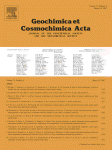What a load of absolute rubbish, no deals were made.
In addition to
@Hans Blaster's post, your comprehension skills of the paper are either non-existent or you didn’t read the paper.
Here is a non-technical description of the paper for you to understand.
The pre solar grains are found in interstellar dust formed in the ejecta of supernovae or stars shedding their surface layers.
One particular solar grain of interest is SiC (silicon carbide) where cosmic rays largely composed of protons collide with the Si nucleus in a process known as spallation to form products such as ²¹Ne (neon) and ³He (helium), ⁷Li (lithium) and ⁶Li inside the grain.
These are stable isotopes that can hang around for billions of years without undergoing radioactive decay.
The solar grains eventually formed part of the molecular cloud from which the solar system formed and ultimately meteorites.
As stated in the report the age is based on ²¹Ne and ³He not on the ⁷Li /Li⁶ ratio which could involve terrestrial contamination.
The amount of terrestrial ²¹Ne and ³He on the other hand is only 0.27% and 0.0001% of the total isotope composition found on earth for each atom respectively.
The grains were separated from the meteorite and heated to release the ²¹Ne and ³He into a mass spectrometer which “counted” their numbers.
By knowing the number, the age of the grains can be calculated as their production rate is considered to be fairly constant.
Note this is a calculation, not an assumption as you naively suggested and there are uncertainties involved such as the rate at spallation and the probability ²¹Ne and ³He are formed if spallation does occur.
This is why there are error ranges in the calculations, but the killer is the error ranges do not include the possibility of a 6000 year old earth, nowhere near it in fact.


